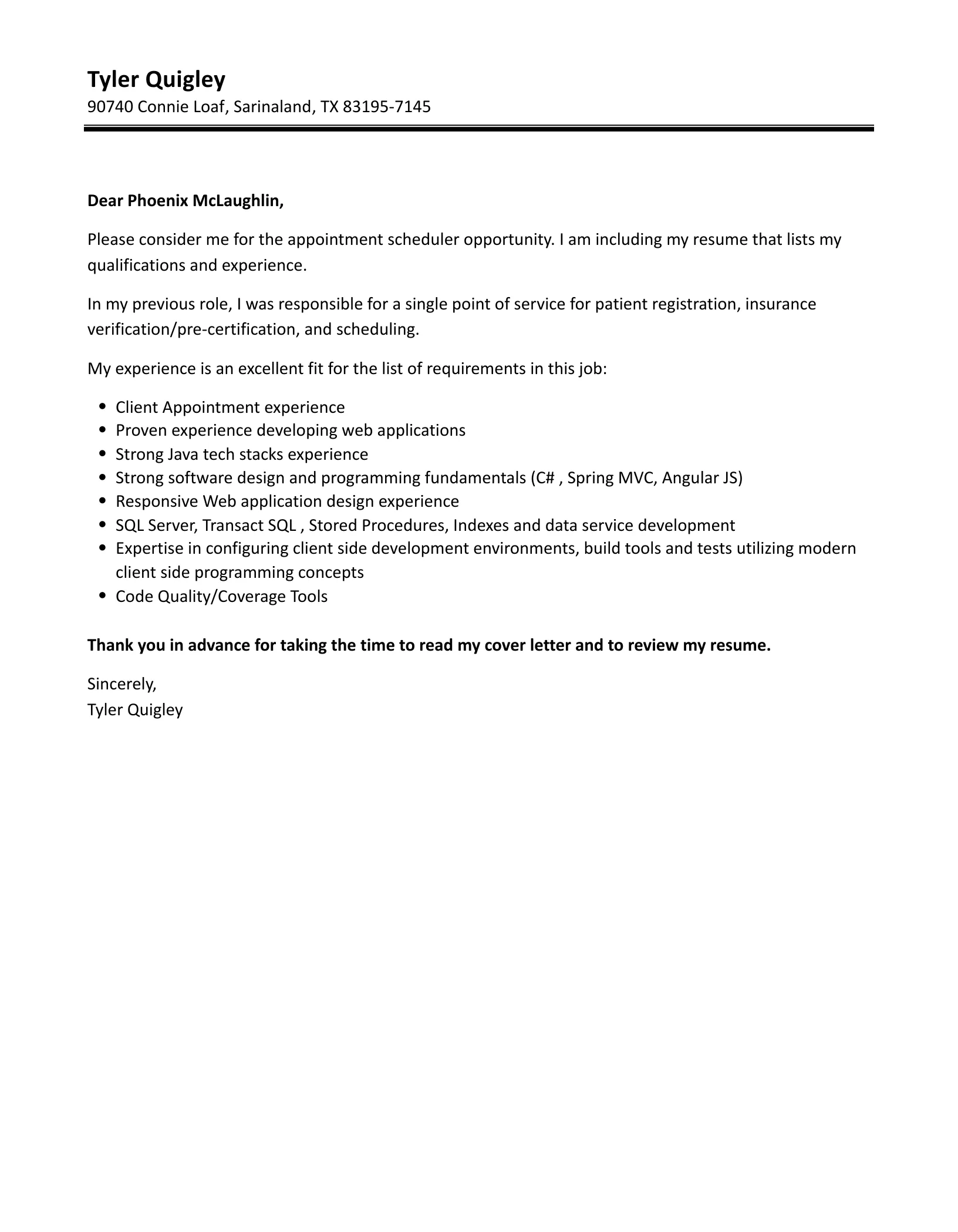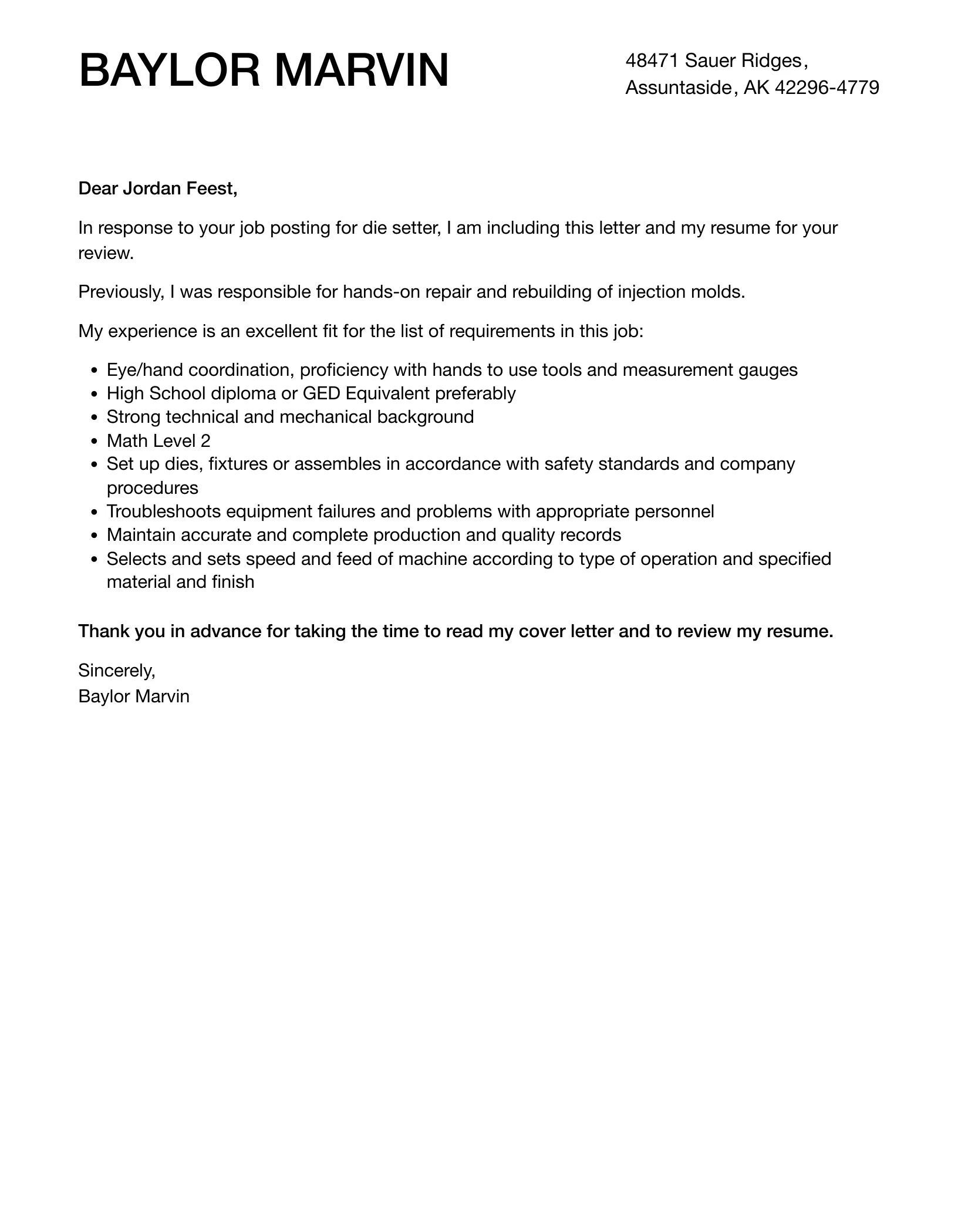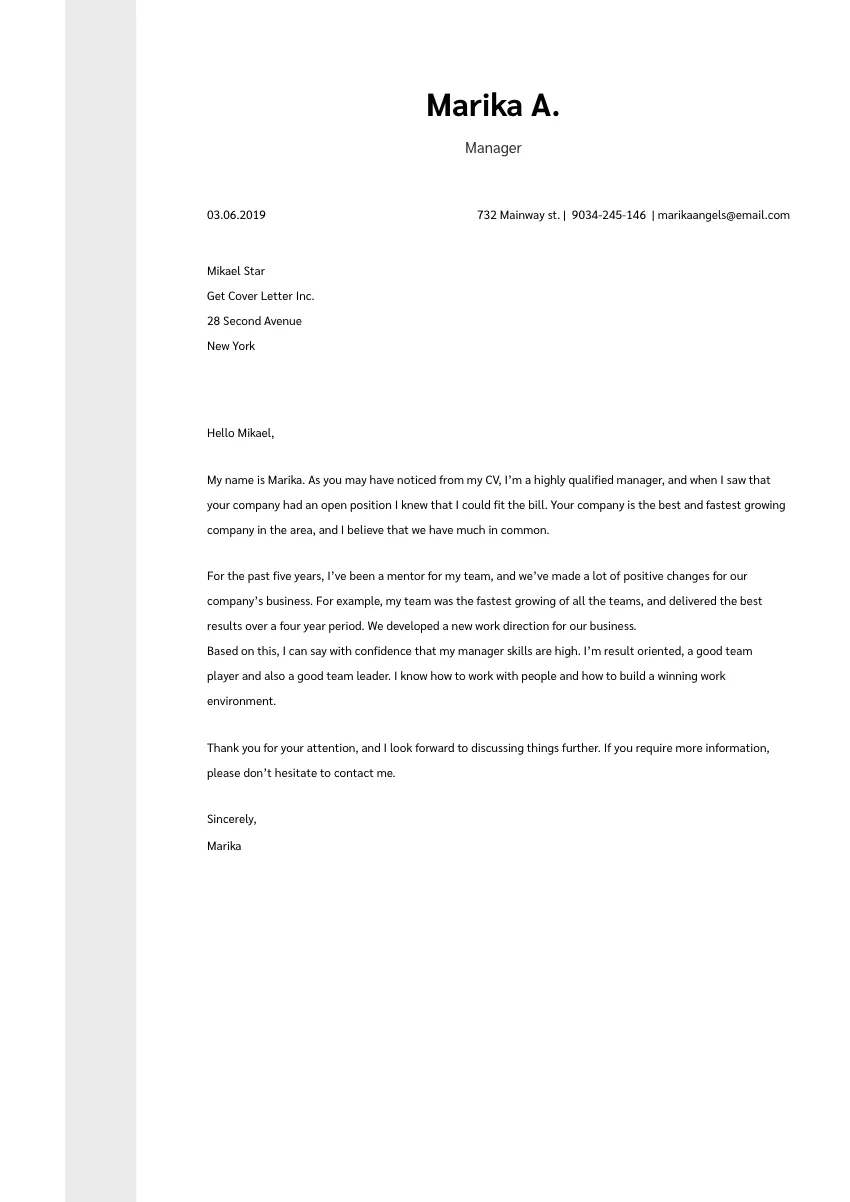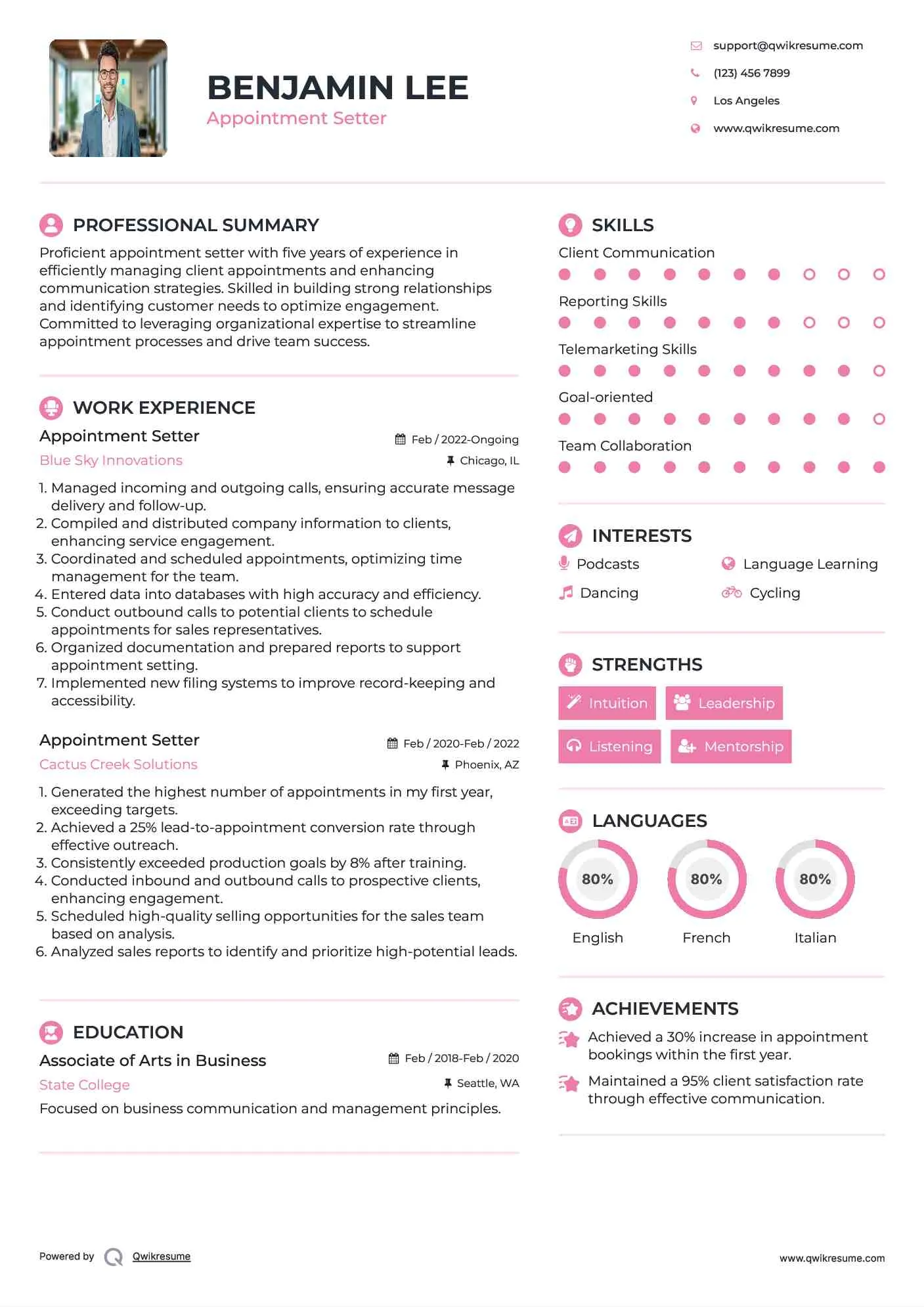Why Your Appointment Setter Cover Letter Matters
In the competitive world of appointment setting, a compelling cover letter can be your golden ticket to landing an interview. It’s your first impression, a chance to showcase your personality, skills, and enthusiasm before you even speak to a potential employer. Unlike a resume, which is a factual document, your cover letter allows you to tell a story, to explain why you’re the perfect fit for the role and the company. A well-crafted cover letter demonstrates your communication skills, attention to detail, and genuine interest in the position, setting you apart from other applicants. It’s an opportunity to highlight your achievements, quantify your successes, and connect your experience directly to the requirements of the job. Failing to invest time and effort into your cover letter is like leaving money on the table; it’s a missed opportunity to make a strong first impression and increase your chances of securing an interview.
Key Components of a Winning Cover Letter
To create a cover letter that truly shines, you need to include several key components. Each section should be carefully considered and tailored to the specific job and company. Remember, this isn’t a one-size-fits-all document; personalization is key. The best cover letters are concise, impactful, and focused on the value you can bring to the organization. Begin with a strong opening that grabs the reader’s attention and clearly states the position you’re applying for. Then, in the body paragraphs, highlight your relevant skills, experiences, and achievements. Use specific examples to illustrate your abilities and quantify your successes whenever possible. Always demonstrate your understanding of the company and the role and show genuine enthusiasm for the opportunity. Finally, conclude with a professional closing that reiterates your interest and includes a call to action, encouraging the employer to contact you.
Contact Information and Greeting

Start your cover letter with your contact information at the top. Include your full name, phone number, email address, and optionally, your LinkedIn profile URL. This makes it easy for the hiring manager to reach you. Following this, address your letter to the hiring manager by name if possible. Research the company and identify the correct person; this level of detail shows your initiative and attention to detail. Avoid generic greetings like “To Whom It May Concern.” Instead, use “Dear Mr./Ms./Mx. [Last Name],” or if you can’t find a specific name, try a more specific title like “Dear Hiring Manager.” Personalizing the greeting immediately establishes a more professional tone and demonstrates that you’ve taken the time to research the company and the opportunity. Ensuring that the greeting is appropriate is a small detail that can make a big difference in making a positive first impression.
Highlighting Your Skills and Experience
The core of your cover letter should showcase your skills and experience relevant to appointment setting. Carefully review the job description and identify the key requirements. Then, highlight your skills and experience that match these requirements. Provide specific examples that demonstrate your abilities. If the job description emphasizes communication skills, give examples of how you effectively communicate with clients, overcome objections, or build rapport. If they’re looking for someone with a strong sales background, describe your successes in previous roles, including specific metrics such as the number of appointments set, conversion rates, or revenue generated. When describing your experience, use action verbs to paint a vivid picture of your accomplishments. Instead of saying, “I assisted with scheduling,” try “I successfully scheduled an average of 20 appointments per week, resulting in a 15% increase in qualified leads.” This level of detail helps the hiring manager understand the value you can bring.
Mentioning Relevant Achievements
While describing your experience, focus on your achievements. Quantify your accomplishments whenever possible. Instead of simply stating that you “exceeded sales targets,” provide specific data such as “consistently exceeded sales targets by an average of 20% each quarter.” Use numbers to highlight your successes. Did you increase appointment setting efficiency by a certain percentage? Did you contribute to a higher conversion rate? Share these metrics to show the impact you’ve made in previous roles. Consider using the STAR method (Situation, Task, Action, Result) to structure your examples. Describe the situation you were in, the task you were assigned, the actions you took, and the positive results you achieved. This method helps you clearly and concisely communicate your achievements. Mentioning relevant achievements is an effective way to prove your value to the potential employer.
Tailoring Your Letter to the Job

One of the most important aspects of a winning cover letter is tailoring it to the specific job and company. Avoid sending generic cover letters. Instead, carefully read the job description and identify the key requirements and keywords. Then, customize your letter to address these points directly. Show that you’ve researched the company and understand its mission, values, and products or services. In your letter, mention how your skills and experience align with the company’s needs and how you can contribute to its success. Tailoring demonstrates that you’re genuinely interested in the opportunity and have taken the time to understand the company. If you know someone who works at the company, mentioning that in a subtle way can also make your application more personal and memorable. A tailored cover letter clearly shows that you’re not just sending out mass applications; you are specifically interested in this role at this company.
Demonstrating Your Understanding of the Role
A successful cover letter clearly demonstrates your understanding of the appointment setter role. Show that you know what the job entails, including the day-to-day responsibilities, required skills, and performance expectations. Mention your familiarity with relevant tools and technologies, such as CRM software, phone systems, and appointment scheduling platforms. Explain how your experience has prepared you to handle the challenges of appointment setting, such as overcoming objections, managing your time effectively, and meeting sales targets. Demonstrate your knowledge of the sales process and your ability to qualify leads and build rapport with potential clients. Showing your understanding of the role is an indicator you are serious about it and are ready to take the next step.
Expressing Enthusiasm and Confidence
Let your enthusiasm and confidence shine through in your cover letter. Show your genuine interest in the position and the company. Use positive and energetic language. Avoid sounding too formal or stiff. Share why you’re excited about this opportunity and what motivates you. Convey your confidence in your abilities and your belief that you can excel in the role. Express your eagerness to contribute to the company’s success. However, be mindful of the tone. Avoid being overly boastful or arrogant. The goal is to strike a balance between confidence and humility. Let your personality come through in your writing, but maintain a professional tone throughout. Expressing enthusiasm and confidence will make a positive impact on the potential employer.
Closing Your Letter Professionally

Conclude your cover letter with a professional closing. Thank the hiring manager for their time and consideration. Reiterate your interest in the position and express your enthusiasm for the opportunity. Include a call to action, such as encouraging the employer to contact you for an interview. Make it easy for the employer to take the next step. Provide your phone number and email address one more time. Use a professional closing salutation, such as “Sincerely,” “Best regards,” or “Yours sincerely.” Avoid casual closings like “Thanks” or “Cheers.” Proofread the closing carefully to ensure it’s free of any typos or grammatical errors. A well-crafted closing leaves a lasting positive impression and increases your chances of getting a response.
Review and Proofread Your Cover Letter
Before submitting your cover letter, review and proofread it carefully. This is a crucial step that can make or break your application. Check for any typos, grammatical errors, or formatting inconsistencies. Ensure that the letter flows logically and is easy to read. Read it aloud to catch any awkward phrasing or unclear sentences. Ask a friend, family member, or career advisor to review your letter and provide feedback. They can offer a fresh perspective and catch any mistakes you might have missed. Pay close attention to the details, such as the spelling of the company’s name and the hiring manager’s name. A polished, error-free cover letter demonstrates professionalism and attention to detail, increasing your chances of a positive response. Do not underestimate the importance of a thorough review.
